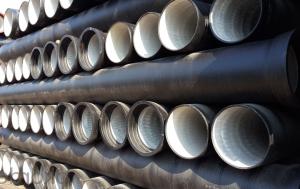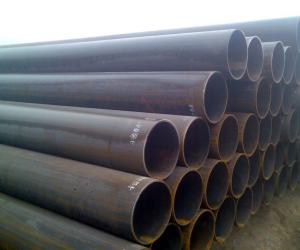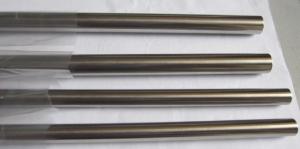3in Stainless Steel Pipe
3in Stainless Steel Pipe Related Searches
Best Paint For Stainless Steel Blanket Insulation For Steel Buildings Primer For Galvanized Steel Foam Filter For Stainless Steel H S Code For Stainless Steel Surface Grinding Wheels For Stainless Steel Surface Grinding Wheels For Hardened Steel Hole Saw For Stainless Steel Paint For Stainless Steel Stainless Steel For BbqHot Searches
Steel Mesh Panels For Sale Price For Stainless Steel Scrap Scrap Price For Stainless Steel Price For Stainless Steel Stainless Steel Tank For Sale Stainless Steel Sheets For Sale Cheap High Tea Sets For Sale Stainless Steel Tanks For Sale Stainless Steel For Sale High Density Fiberboard For Sale Solar Hot Water Collectors For Sale Scaffolding For Sale In Uae Scaffolding For Sale In Ireland Scaffolding For Sale In Houston Type Of Inverter For Solar Price Of Shipping Containers For Sale Types Of Inverter For Solar Stock Price For Aluminum Used Solar Inverter For Sale Steel Mesh Panels For Sale3in Stainless Steel Pipe Supplier & Manufacturer from China
Okorder.com is a professional 3in Stainless Steel Pipe supplier & manufacturer, offers integrated one-stop services including real-time quoting and online cargo tracking. We are funded by CNBM Group, a Fortune 500 enterprise and the largest 3in Stainless Steel Pipe firm in China.Hot Products
FAQ
- The average cost of stainless steel pipes can vary depending on various factors such as the size, grade, and supplier. On average, stainless steel pipes can range from $5 to $20 per foot. However, it is recommended to obtain quotes from multiple suppliers to get a more accurate and current price.
- Differences can be observed between seamless and cold-rolled stainless steel pipes in terms of their manufacturing process and resulting characteristics. Seamless stainless steel pipes are created by piercing a solid cylindrical billet of stainless steel and subjecting it to various steps, including elongation and reduction, to achieve the desired size and shape. Through this process, the pipe acquires a smooth and even surface without any welded seams. As a result, seamless stainless steel pipes exhibit superior strength, durability, and resistance to corrosion. Furthermore, they are capable of withstanding high pressure and temperature conditions, making them suitable for a wide range of applications, such as oil and gas pipelines, chemical processing, and power generation. On the other hand, cold-rolled stainless steel pipes are manufactured by rolling stainless steel sheets or strips at room temperature. This process involves passing the material through a series of rollers to reduce its thickness and shape it into a cylindrical form. Unlike seamless pipes, cold-rolled pipes possess visible welded seams on their surface. While these seams may potentially weaken the pipe, their strength and integrity can be improved by applying additional processes such as heat treatment or cold working. The choice between seamless and cold-rolled stainless steel pipes depends on the specific requirements of the application. Seamless pipes are generally preferred when high strength, corrosion resistance, and pressure resistance are crucial, especially in industries where leaks or failure can have severe consequences. On the other hand, cold-rolled pipes may be more suitable for applications where cost-effectiveness and moderate performance are sufficient, such as certain plumbing systems or decorative purposes. To summarize, seamless stainless steel pipes are manufactured without welded seams, offering superior strength, durability, and resistance to corrosion, making them ideal for demanding applications. Meanwhile, cold-rolled stainless steel pipes, which possess visible welded seams, are generally more cost-effective and suitable for less demanding applications that do not require the same level of strength and corrosion resistance.
- Indeed, stainless steel pipes have the capability to be utilized in the realm of semiconductor manufacturing. The rationale behind this lies in the fact that stainless steel possesses exceptional resistance to corrosion, can withstand high temperatures, and exhibits mechanical strength. Due to these attributes, stainless steel pipes become well-suited for an array of applications within the semiconductor industry, including gas and chemical delivery systems, vacuum systems, and high-purity water distribution. The procedures involved in semiconductor manufacturing necessitate the transportation of diverse gases, chemicals, and liquids, and stainless steel pipes prove to be reliable and capable of maintaining purity throughout this process. The corrosion resistance of stainless steel guarantees that the pipes will not contaminate the semiconductor materials or the manufacturing process. Furthermore, stainless steel pipes can endure the high temperatures inherent in semiconductor manufacturing without compromising their structural integrity. Additionally, stainless steel pipes can be manufactured to meet the stringent cleanliness requirements of the semiconductor industry. They can undergo electropolishing or passivation to eliminate surface impurities and contaminants, further enhancing their suitability for utilization in semiconductor manufacturing. In summary, stainless steel pipes present a durable, corrosion-resistant, and high-purity solution for semiconductor manufacturing applications, which renders them a favored choice in the industry.
- The maximum pressure that stainless steel pipes can handle depends on various factors such as the grade of stainless steel, the wall thickness of the pipe, and the specific application. Generally, stainless steel pipes have high resistance to pressure, making them suitable for various industrial applications. Stainless steel pipes are available in different grades, such as 304, 316, and 321, each with its own maximum pressure rating. For instance, grade 304 stainless steel pipes can typically handle pressures up to 870 psi (pounds per square inch), while grade 316 stainless steel pipes can handle pressures up to 1,500 psi. It is important to note that the wall thickness of the pipe also plays a significant role in determining its maximum pressure handling capacity. Thicker-walled pipes can generally handle higher pressures than thinner-walled pipes. Additionally, the specific application and the conditions under which the stainless steel pipes are used can impact their maximum pressure capacity. Factors like temperature, corrosive substances, and external forces should be considered to ensure the pipes can withstand the intended pressure. To determine the maximum pressure that stainless steel pipes can handle for a specific application, it is recommended to consult with a qualified engineer or refer to industry standards and guidelines, such as those provided by the American Society of Mechanical Engineers (ASME) or the International Organization for Standardization (ISO). These resources provide detailed information on pressure ratings and specifications for different grades and sizes of stainless steel pipes.
- Indeed, fiberglass insulation can be applied to stainless steel pipes. It is a frequently employed method for insulating diverse pipe varieties, including stainless steel ones. By doing so, it aids in diminishing heat loss and preserving the pipe's temperature, hence enhancing its energy efficiency. Moreover, fiberglass insulation also offers advantages such as soundproofing and condensation management. To attain optimal insulation performance and achieve utmost energy conservation, it is imperative to correctly install and seal the fiberglass insulation around the stainless steel pipes, thus eliminating any gaps or air leakage.
- Yes, stainless steel pipes can be used in marine environments. Stainless steel is highly resistant to corrosion and can withstand the harsh conditions present in marine environments, such as saltwater, humidity, and exposure to various chemicals. This makes stainless steel pipes a suitable choice for applications in marine industries, including shipbuilding, offshore platforms, and other marine structures.
- Yes, stainless steel pipes can be used in the petrochemical industry. Stainless steel has excellent corrosion resistance properties, making it suitable for handling various aggressive chemicals and fluids found in petrochemical processes. Additionally, stainless steel pipes offer high strength, durability, and are capable of withstanding high temperatures and pressures, making them a reliable choice for the petrochemical industry.
- Certainly, stainless steel pipes can be utilized in the renewable energy sector with great effectiveness. Stainless steel is an incredibly versatile and durable material that presents numerous advantages for diverse applications within renewable energy systems. One of the primary advantages of employing stainless steel pipes lies in their exceptional resistance to corrosion. This attribute renders them highly suitable for deployment in environments where exposure to moisture, chemicals, and other corrosive elements is prevalent. For instance, solar power plants, geothermal energy systems, and offshore wind farms benefit immensely from the ability of stainless steel pipes to endure these harsh circumstances and maintain their structural integrity over extended periods. Consequently, the frequency of repairs and replacements is minimized. Another merit of stainless steel pipes is their excellent strength-to-weight ratio, facilitating the design of lightweight and efficient structures for renewable energy endeavors. These pipes can be utilized in constructing support frames, structures, and pipelines for wind turbines, solar thermal collectors, and biomass power plants, among other applications. Their strength and durability contribute to the overall reliability and longevity of renewable energy systems. Moreover, stainless steel pipes exhibit resistance to extreme temperatures, making them highly appropriate for deployment in high-temperature scenarios like concentrated solar power systems. These pipes can withstand the intense heat generated by solar receivers without suffering deformation or degradation, ensuring the efficient transfer of heat within the system. In addition to their mechanical properties, stainless steel pipes are also hygienic and environmentally friendly. They are easily cleaned and maintained, thereby reducing the risk of contamination and ensuring the purity of fluids utilized in renewable energy processes. Furthermore, stainless steel is a recyclable material, aligning perfectly with the sustainability principles of the renewable energy industry. In summary, stainless steel pipes offer a dependable, long-lasting, and cost-effective solution for a wide range of applications within the renewable energy sector. Their corrosion resistance, strength, temperature tolerance, and environmental benefits make them an exceptional choice for fluid transportation, structural support, and the ability to withstand the demanding conditions encountered in renewable energy systems.















































